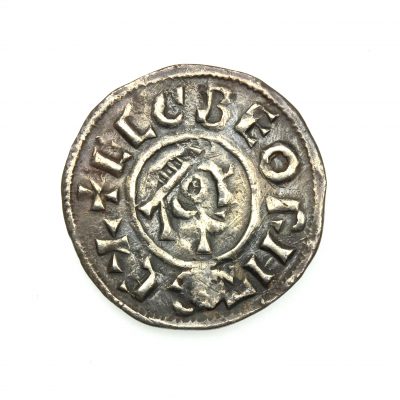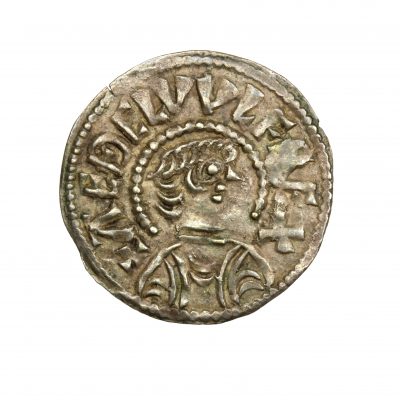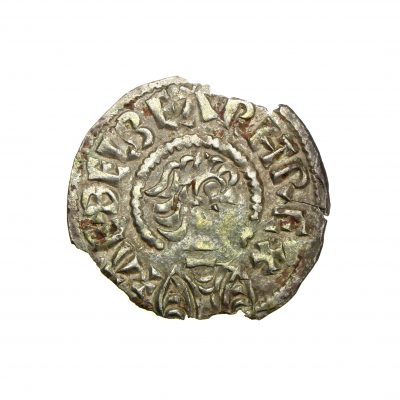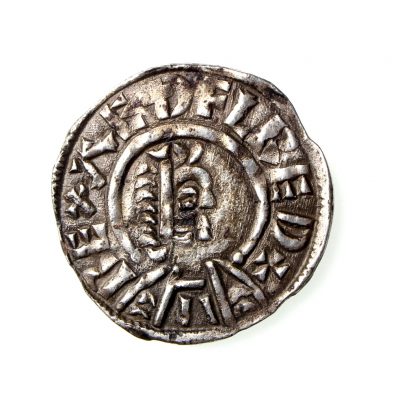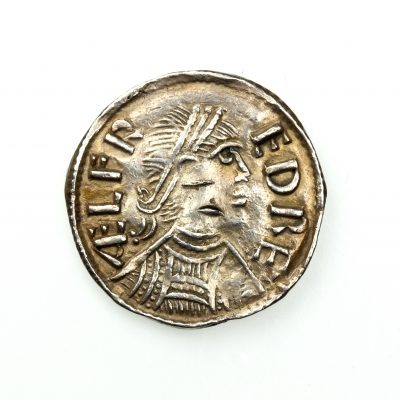Anglo-Saxon Kingdoms: Wessex
Like Mercia, the Kingdom of Wessex (or, the West Saxons) has left an historic legacy which survives to this day – similarly preserved in some administrative areas and institutions. If Mercia is best seen as the powerhouse which ruled supreme over most of the other Anglo-Saxon Kingdoms for most of its existence, then Wessex must be the plucky underdog, the slow-burner that effectively stepped into the boxing ring at the right moment to deliver a crushing knockout blow. The rise of Wessex to primacy in the early 9th century was meteoric. While the other kingdoms crumbled in the face of civil war and Scandinavian incursions, Wessex stood firm against adversity – and emerged as ‘last man standing’ having fought its superior enemy to an utter standstill. Although England’s problems with Danish incursions would last until the early 11th century, the Kings of Wessex and their descendants would rule for almost two centuries. Wessex effectively foreshadows the emergence of the unified English State, acting as its nucleus. As such, it is only fair that we dedicate a little more paper to fleshing out its history within this short note.
Geographically, Wessex held a vast swathe of territory – corresponding broadly to the modern counties of Hampshire, Wiltshire, Dorset, parts of Somerset and Berkshire. For much of its existence (from a geo-political view), Wessex existed in the shadow of Mercia. However, it was never formally absorbed by it and experienced less of the administrative interference so evident in Kent and East Anglia. However, there are some hints in the historical narrative that infer a relationship that perhaps bordered on vassalage. Our story in this respect (and indeed, in matters numismatic pertaining to Wessex) begins with the reign of Beorhtric, who (despite not being from the traditional West Saxon royal lineage) was placed on the throne with the support of Offa of Mercia following the death of the previous king, Cyneheard. This support seems to have come at some cost, as Beorhtric was married to one of Offa’s daughters, Eadburgh – and the kingdoms thus joined in an alliance. Some historians believe that Beorhtric wielded little power, though Wessex was never ‘annexed’ militarily. As well as his and Offa’s joint signing of documents such as land charters, he was seemingly able to issue coins in his own name at some point (only two of which survive, both in the British Museum). It is also true that coins of Offa are encountered quite commonly in Wessex, though this could reflect minting capabilities and the coins acting as a good standard currency of ease. Beorhtric reigned reasonably uneventfully until 802, although in 786 Wessex suffered the first recorded Scandinavian incursion into Britain. A party of raiders landed on the coast and killed the local Reeve (fiscal official), in an event which is somewhat less well known than the attack on Lindisfarne some seven years later. Like many other Anglo-Saxon rulers, the manner of his death is unknown – though the chronicler Asser (writing in the 880s and 890s) states that he was poisoned by his wife. Nevertheless, his death seems to have left something of a succession crisis, given that he had no known issue – and after him, the throne was taken by a man called Ecgberht.
Ecgberht himself was a fascinating character. Some sources suggest that he was descended from the Kentish kings who ruled before Offa’s takeover – and had in fact fled to Wessex after this occurred. Subsequently, he was expelled from Wessex as well – going into exile at the court of Charlemagne in Frankia. It is thought that when Ecgberht returned, he did so with Charlemagne’s backing – and evidently this was influential, since he ruled until 839 and effectively founded Wessex’s main dynasty. Though his early reign is poorly understood, historians favour the idea that Wessex existed much more independently than it had under Offa – given that Ecgberht issued a fairly extensive coinage and that Offa’s successor, Coenwulf, is never credited with ruling directly over the ‘Southern English’ in documentary sources. There are some glimpses of growing military power – for example, the westward-facing campaigns against the Cornish in c. 815 and 825. It is perhaps these that convinced the Mercians that something really had to be done about this dangerously ascendant kingdom, and fast.
At the same time as his second campaign in 825, perhaps thinking that Ecgberht’s forces were distracted with the Cornish, Beornwulf of Mercia invaded – apparently hoping to strike a decisive blow against Wessex. However, this backfired terribly when Ecgberht led his army to a stunning victory against the Mercians at Ellandun (possibly south of Swindon). Capitalising on his victory, the Anglo-Saxon Chronicle describes Ecgberht’s subsequent decisive actions: ‘Then he sent his son Æthelwulf from the army, and Ealhstan, his bishop, and Wulfheard, his ealdorman, to Kent with a great troop.’ The last Mercian client king, Baldred, was deposed and fled, after which the vassal-kingdoms of Sussex, Essex, Kent and Surrey all submitted to Wessex. Pressing his attack further, in 829 Ecgberht invaded Mercia and deposed King Wiglaf – taking control of London and leading to his being named as Bretwalda (‘wide-ruler’ – used of a king who exercised supremacy over kingdoms beyond his own) by documentary sources. Although Wiglaf returned in 830 to rule again under circumstances which are unclear, Mercia would never again challenge Wessex for dominance.
By the 830s onwards Britain was beginning to come under pressure from marauding Scandinavian raiding parties. It is against this backdrop that Ecgberht appointed his son Æthelwulf to be a sub-king – administering the ‘provinces’ of Sussex, Essex and perhaps also Kent on an itinerant basis along with his household, as was the custom. His concern with a smooth power transition following his death is evidenced by the Council of Kingston in 838, where the Archbishops of Canterbury and Winchester affirmed loyalty to Æthelwulf in exchange for lands and privileges. Having done all he could to ensure the resilience of Wessex, Ecgberht would die the next year, his son succeeding his throne as planned.
It is at this point that the historical narrative becomes quite complicated, as Æthelwulf had a total of five sons by several successive wives; Æthelstan, Æthelbert, Æthelbald, Æthelred and Alfred. On taking the throne Æthelwulf would also utilise the ‘sub-king’ system in a carbon-copy of his father’s policies – appointing his eldest son Æthelstan to govern over Essex, Surrey and Sussex. By this time, previous enmity with Mercia seems to have been much dulled, perhaps reflected by apparent exchanges of territory – such as London being ‘gifted’ to the Mercians and the passing of Berkshire over to West Saxon control in the 840’s. Despite the intensifying of Scandinavian raids on Britain in the 840s and 850s which ravaged especially the East Coast, Wessex largely prevailed while other localities entered a steep decline. Having won a stunning victory at the Battle of Aclea in 851 against the Danish force that had sacked London the same year, Æthelwulf turned to matters domestic. His rule was direct and effective, appointing his eldest son Æthelstan to rule over Kent, Essex and Sussex as a sub-king while he himself controlled Wessex directly. In fact, so confident was Æthelwulf in the abilities of his sons and administration to manage things at home, that he went on a nearly two-year pilgrimage to Rome between 855 and 856 (via the court of Charles the Bald of Frankia), leaving his second son, Æthelbald, to rule Wessex on his behalf. Perhaps his doubts were bolstered by the new alliance with the Mercians, through the marriage of their King Burgred to his daughter, Æthelswith. The wide ranging nature of Æthelwulf’s imperium over southern England is reflected in his money. Issuing coins in four chronological phases from the mints of Canterbury and Rochester, the skill of Æthelwulf’s die cutters have left us some iconic designs. Examples of the latter include the so-called ‘inscribed cross’ issue where the moneyer’s name is rendered in a cruciform layout, or the so-called ‘SAXONIORUM’ design, consisting the aforementioned word arranged as an ornate monogram within the centre of the reverse.
On returning from Rome, Æthelwulf’s authority was challenged by Æthelbald – who had perhaps enjoyed sole rule of Wessex a little too much during his absence. Perhaps sensing that to engage in civil war would be ultimately ruinous, Æthelwulf agreed to split the rule of Wessex between them. This somewhat complex situation lasted until his death in 858, whereupon Æthelbald became the sole ruler of Wessex and Æthelwulf’s third son, Æthelberht, became the new sub-king of Kent. However, Æthelbald died suddenly in 860 – leaving Æthelberht to rule alone until 865, when he in turn died suddenly. He was succeeded by his younger brother Æthelred, whose rule coincided with perhaps the worst crisis of the entire Middle Saxon period. In his second year as king, the ‘Great Heathen Army’ invaded Britain. This was a total change from the previous strategy of the Scandinavians – permanent settlement as opposed to hit-and-run attacks with occasional longer visits. Their efforts first focused on destroying Northumbria and then East Anglia – only turning their attention to Wessex in 870, when, under their leader Halfdan, they attacked and occupied the town of Reading. A series of running battles with varying outcomes between late 870 and 871 (including those at Reading, Ashdown and Meretun) resulted in a depleted West Saxon army and the loss of many leading West Saxon nobles, including Bishop Heahmund of Sherborne. To compound the issue, Æthelred would die on April the 15th of 871 while campaigning against the Vikings was still taking place – leaving his brother Alfred (the youngest son of Æthelwulf) to take up the torch.
This was the critical moment in Middle Saxon history; indeed, one of the most pivotal moments in the history of Britain. Wessex, defeated in battle, depleted of manpower, had just lost its king – the new monarch being his younger brother at the humble age of c. 22. Even as the preparations for the funeral were being made, news was arriving of fresh Viking victories over the forces of Wessex in the second battle of Reading and another engagement at Wilton. A less illustrious ruler might have folded under the pressure, but this was Alfred – and although his epithet ‘The Great’ would not be coined until the 16th century, he was very much more than the inept highborn familiar to people in the apocryphal tale concerning his ‘burning of the cakes’ (which almost certainly never happened).
With his forces largely dispersed and defeated, he was forced to sue for peace with promises of money for the Vikings. Through this strategy, Alfred managed to gain a few valuable years of respite as the invading Vikings retreated to London and focused their depredations on other parts of the country – a pause which allowed him to patch up at least some of the damage. However, the invaders eventually returned to spoil the ceasefire, occupying the Dorsetshire port of Wareham in 876 and massacring a number of townspeople before fleeing to Devon. Although Alfred was able to pursue them and drive them out of Wessex, a surprise attack on the royal vill of Chippenham in early 878 (while the court of Wessex was celebrating Christmas) killed a large part of the West Saxon nobility and forced Alfred into the Somerset marshes as a fugitive. Despite the physical and psychological pressure caused by this turn of events, he fought back – building a fort from which he assailed the Scandinavians, and eventually succeeding in rebuilding his military forces through the mobilisation of local militias. After some months of preparation, he defeated the Vikings at the battle of Edington in the summer of 878 and besieged them at his old court of Chippenham. Holding all the cards, Alfred was able to ensure a lasting and true submission from them with a number of binding conditions, encompassed within a formal treaty. Finds such as the Watlington and Leominster hoards, containing a mix of coins and objects or precious-metal ingots, are interpreted as panicked wealth deposits made by retreating Danes – escaping or migrating north in the wake of Edington and Alfred’s agreement.
The main thrust of this treaty was to ensure the Vikings left Wessex and returned to their ‘homelands’ in East Anglia and Northumbria that they had first conquered upon arriving in 865. This territory was effectively gifted to them, becoming the so-called Danelaw. From then on, the Scandinavians retained control of slightly less than 50% of England – East Anglia, Northumbria and the Eastern part of Mercia. Additionally, the treaty also stipulated the need for their leader, Guthrum, to convert to Christianity along with a number of his high-ranking co-invaders. This political masterstroke, ratified in c. 880, marked the beginning of the end for Scandinavian attacks on England for almost a century. Those who had come over as ‘Vikings’ got what they wanted in the form of a new home and land to settle on, while Alfred maintained the integrity of Wessex and mostly put an end to ruinous raiding at a stroke, while also helping to ease ecclesiastical tensions through conversion of the new arrivals. Although some further large Viking incursions would occur in the 890’s, Alfred’s effective rule was such that these were dispersed relatively quickly, their participants quickly settling peaceably in the Danelaw or returning to Scandinavia once they realised that challenging him was largely pointless.
After enacting his treaty with Guthrum Alfred embarked on a series of major reforms both military and political. In addition to creating a standing army and system of local fortifications designed to quickly mobilise forces against marauding Scandinavian raiders he also (arguably) founded the first ‘Royal Navy’ – a fleet of vessels intended to assault raiding parties at sea, before they had a chance to land. Alfred also instituted a more complex system of taxation and even began the laborious process of creating educational institutions to undo the damage done to centres of learning by the Vikings. In 886 he re-occupied London, which was largely abandoned after the great Viking attack of 851 and began developing parts of the South Bank to improve its status as a city and economic hub – as well as renewing its Roman fortifications. This renewal is apparently commemorated on a particularly distinctive issue he strikes in the late 880’s, the so-called ‘monogram’ type pennies – which depict on their reverse faces the inscription ‘LVNDONIA’ (London) as an intricate monogram. Following these successes, he declared himself ‘King of the Anglo-Saxons’ – a bold claim, but perhaps not inaccurate given the fealty sworn to him by many of the southern kingdoms. This change marks an interesting transitory period in Anglo-Saxon history, where the kingdom of ‘England’ did not yet exist but the rulers in charge certainly saw themselves as overseeing the entire ‘Anglo-Saxon’ or ‘English’ peoples.
Alfred died in 899 aged around 50, perhaps worn out by his sheer efforts. Asser states that he suffered a long illness throughout his entire life, which based on analysis of the symptoms may have been Crohn’s disease. Buried in Winchester, his body (and that of several family members) was moved several times – but tragically destroyed in the late 18th century when the site of his final resting place was re-developed. His death effectively marked the end of the Middle Anglo-Saxon period, his son Edward taking the throne. Although Alfred had largely contained the Viking threat during his lifetime and set the stage for a united ‘English’ identity, his descendants would have fresh challenges to face and a nation to forge – but that is a story for another day.
If there is a common theme across the numismatics of the Middle Saxon kingdoms, it is that virtually all (with the notable exception of certain Northumbrian series) range from rare to extremely rare. As we have previously discussed, this limited supply drives desirability – and ultimately, price. However, in the case of coins from the Kingdom of Wessex the latter factors are exacerbated by the sheer fame of the people involved. Television shows such as ‘Vikings’ and ‘The Last Kingdom’ – in which a number of the West Saxon kings are depicted within the broad scope of English 9th century history (with some liberties), have only served to inflame the appetite for all things Anglo-Saxon. To own coins of Wessex is to hold things associated with people who quite literally set the foundations for the modern nation of England. The latter makes acquiring coinage from this kingdom is a challenging task that requires healthy pockets as much as it does patience – but is ultimately extremely rewarding. As with many other Middle Saxon issues from the other kingdoms, it may be necessary to sacrifice adherence to solely acquiring coins in good grade, in order to fill difficult gaps.
Assembling a full ‘set’ of West Saxon kings is unfortunately an endeavour probably doomed to fail, given the extreme scarcity of Beorhtric’s coins. However, to acquire coins from the other rulers of Wessex is a more achievable task – despite the likely expense associated with coins of Alfred. Alternatively, the reasonable number of locales striking coins (particularly in the reigns of Ecgberht and Æthelwulf) and the abundance of types issued allows for a more focused scope of collecting based either on the issues of one specific ruler or mint. Acquiring moneyer sets is also the potential basis for a collection – perhaps best suited specifically to the ‘Lunettes’ coinage of Alfred, which was struck by over fifty different moneyers (as discussed in Adrian Lyons and William Mackay’s excellent paper on the subject). Lastly, for those who collect with a more academic angle, the subject of Anglo-Viking imitations of Alfred’s coins (particularly his two-line type) struck in the Danelaw after his treaty with Guthrum is a constantly evolving area of Early Medieval numismatics, new examples of these coins turning up in East Anglia every year as detector finds. If your passion is for deciphering blundered legends, die-links and publishing research, assembling a collection of these very interesting pieces might just be for you.

